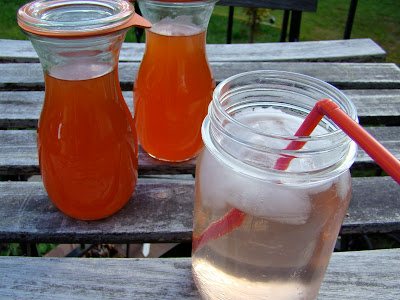These are the books I have taken off of various bookshelves during the month. The current plan is to write up some book notes toward the end of every month. I'd love any book recommendations you have—just leave a comment.
The Thirteenth Tale by Diane Sutterfield. I’m not quite done with this one yet, and it was last month’s book group selection (shameful, I know), but it’s good so far. A mysterious and an intriguing novel, it is a story about writers and storytelling (which I always love). My book group had a good discussion and it seemed the book was enjoyed pretty universally (I was trying not to listen too intently as I had only read the first 60 pages at that point). I’ll add to my review when I finish it in the next couple of weeks.
Is Everyone Hanging Out Without Me? by Mindy Kaling. Kaling’s book is this month’s book group selection. Kaling is a comedy writer (most know her as Kelly Kapoor in The Office and by her new show, The Mindy Project which is in its first season this year). There are truly funny moments in the book that made me chuckle out loud. It would be a great, easy summer read. Kaling writes about growing up with a charm and quirkiness that I admire. The charm was somewhat lost for me as she writes about her eventual success as a comedy writer. The second half of the book is a bit scattered, but it is worth a read, especially if you’re in the mood for light and witty. Kaling makes a lot of lists in the book, and I do love a good list, but toward the end some of her lists feel like a stretch; they don’t fit in as seamlessly as the writing in the early chapters.
Real Fast Food by Nigel Slater. I’ve been reading and cooking from Nigel Slater’s book for a couple of months now, and I am a bit in love. I foresee making space for more of Slater’s cookbooks on our shelves. I’m on a mission to diversify the food we eat; I tend to make the same food over and over and I need to be more creative. Slater’s Real Fast Food is helping; the meals are easy, use few ingredients, and don’t take a lot of prep time--perfect for making after a long work day. I was introduced to Slater by The Wednesday Chef, who posted this recipe from the book. It is a favorite at our house. I also love his recipe for scrambled eggs with a white wine reduction: breakfast just got classy in our house. (That’s Classy with a capitol c. My dad left us some Refreshing White in a box of Franzia after a recent visit. I used that for the eggs instead of opening a bottle. Classy, I tell you. I'm sure Slater would not quite approve of the wine choice).
The Lifespan of a Fact by John D’Agata and Jim Fingal. John D’Agata is breathing life into the literary essay, fighting for the essay as a current and relevant genre. He teaches nonfiction writing at the University of Iowa, a nationally renowned writing program. D’Agata wrote an essay that was rejected by the publication which commissioned the piece because it was deemed too fictional. Another publication picked the essay up and gave Fingal, an intern for the publisher, the job of fact-checking the entire piece. The Lifespan of a Fact is the product of that project. D’Agata’s essay is published in the center of the book’s pages, surrounded by notes and correspondence written by Fingal. The notes are color coded based on whether or not D’Agata’s statements were verified; source references and D’Agata's responses to Fingal's work are included, creating a full conversation with the essay itself. The resulting text explores how far facts might be stretched before creative license moves non-fiction writing too close to fiction writing. I’ll be using the text in my literary essay writing class in the fall.
The Weed that Strings the Hangman’s Bag by Alan Bradley. I am a mystery novel junkie. Books are my crack, and mystery novels are the best kind of crack. I actually haven’t read enough of them in the last couple of years. I’m trying to remedy that. Alan Bradley’s Flavia de Luce series is my newest discovery. I quite love the character Bradley has created in this chemistry-mad eleven-year-old. I have a fondness for spunky girl detectives, especially those who works to find their own spaces in the world. The series begins with The Sweetness at the Bottom of the Pie, set in the English countryside around 1950. The Weed that Strings the Hangman’s Bag is the second in the series. This book wasn’t quite as endearing as the first, but it’s a series I will continue to follow. Flavia is a kick and in this novel, the character of Grace Ingleby is heartbreakingly lonely; Bradley writes characters well.
What are you reading?









